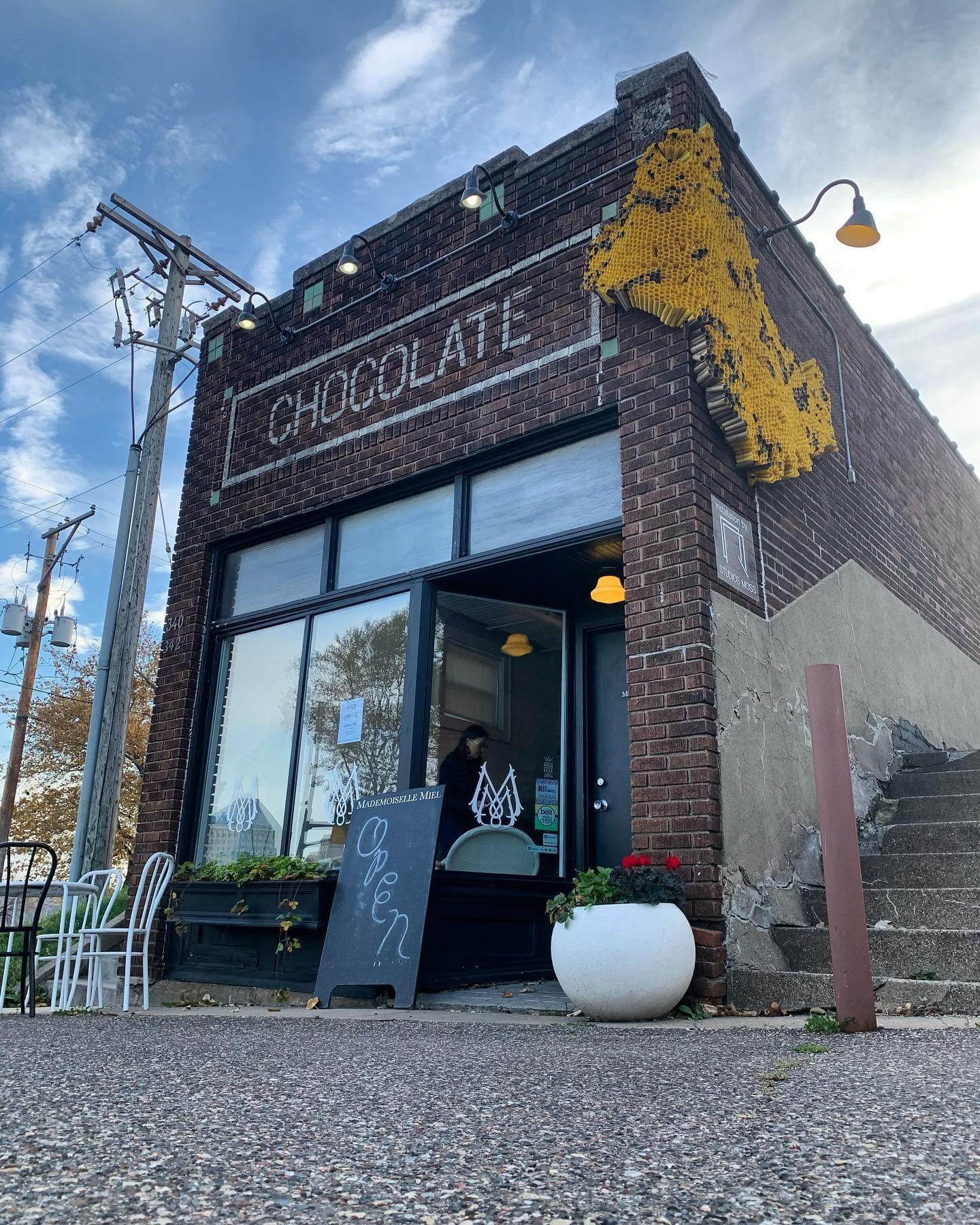How a Beekeeping Chocolate Maker is Using Foraged Ingredients to Make Bonbons
Susan Brown has a truly unique career: she’s a beekeeping chocolate maker and owner of artisan chocolatier Mademoiselle Miel (French for “Miss Honey”). “I started with bees and honey,” she says. “But I tell people everything leads to chocolate—that’s how I got where I am!”
“I’ve found my niche in making chocolates and desserts with natural ingredients,” she continues. “I enjoy being outside and foraging and celebrating the place where I am and the time I’m there. That’s reflected in the chocolate we make—a lot of the time [the flavors are] seasonal, and we only use maple and honey [as sweeteners].”
Mademoiselle Miel
Over the past eleven years, Brown has sold chocolates to customers around the world from her St. Paul, Minnesota shop, a tiny brick building adorned with a swirling honeycomb sculpture. Brown sources the honey for her confections from several hives on the shop’s roof and also maintains hives atop Union Depot, the city’s transportation hub. In addition to providing honey, the bees are beneficial to the city’s green spaces, doing crucial work to pollinate plants and trees.
For Brown, honey is more than just an ingredient. “Of all the foods that exist on the planet, honey is the only one that never spoils,” she says. “That single statement is so magnificent, I can't stop thinking about it. I’m obsessed with the notion there is a lot more there that we don’t understand…I have a sense honey is really important, and I'm honoring that.”
Combining honey and chocolate is not an obvious choice: chocolate is oil-based, while honey is water-based. That’s why Brown uses honey as a filling for her signature bonbons: an unsweetened, single-origin chocolate shell filled with raw honey and adorned with edible gold leaf. “They’re like life,” she says. “A little bitter, a little sweet.”
Other bonbons mix honey with other flavors, like whiskey or juniper oil and dried cranberries. Brown also uses maple sugar—while she has made chocolate bars with honey, the results are less firm and crisp than typical chocolate. “I enjoy more traditional chocolate with a snap, so our bars are sweetened with maple sugar,” she explains.
Foraged Ingredients
In addition to honey and maple sugar, Mademoiselle Miel products incorporate foraged ingredients such as dandelions and mulberries. Brown also grows raspberries and herbs including mint, lavender, and rosemary to use in her chocolates.
Other sustainable ingredients are purchased from local producers, like Minnesota-grown oats and wild rice. “We use wild rice milk in some of our bars,” says Brown. “It’s about what grows here, and what’s available, and what tastes good.”
Brown continues to experiment with new ingredients. A cricket chocolate bar she offered as a gag gift during the holiday season was unexpectedly popular and sparked her interest in exploring edible bugs. She wants to work more with wild rice milk, an ingredient that she isn’t aware of any other chocolate makers using.
She also plans to expand her business and will be offering a coffee menu at her retail shop to draw in more people. Going forward, she hopes to reestablish wholesale accounts that lapsed during the pandemic, so that customers can purchase Mademoiselle Miel products at museum gift shops, co-ops, and specialty food shops.
As she reflects on the past two years, Brown draws a parallel between the hive mentality of the customers who came to Mademoiselle Miel specifically to support her small business during the pandemic and the efforts of the bees who make the honey she uses in her bonbons.
“A honey bee lives about 6 weeks. During its whole life it collects 1/12 teaspoon of honey, but we pull out hundreds of pounds of honey a year from a hive. Every little bit matters—even if you can only support a business a little bit, it matters.”




